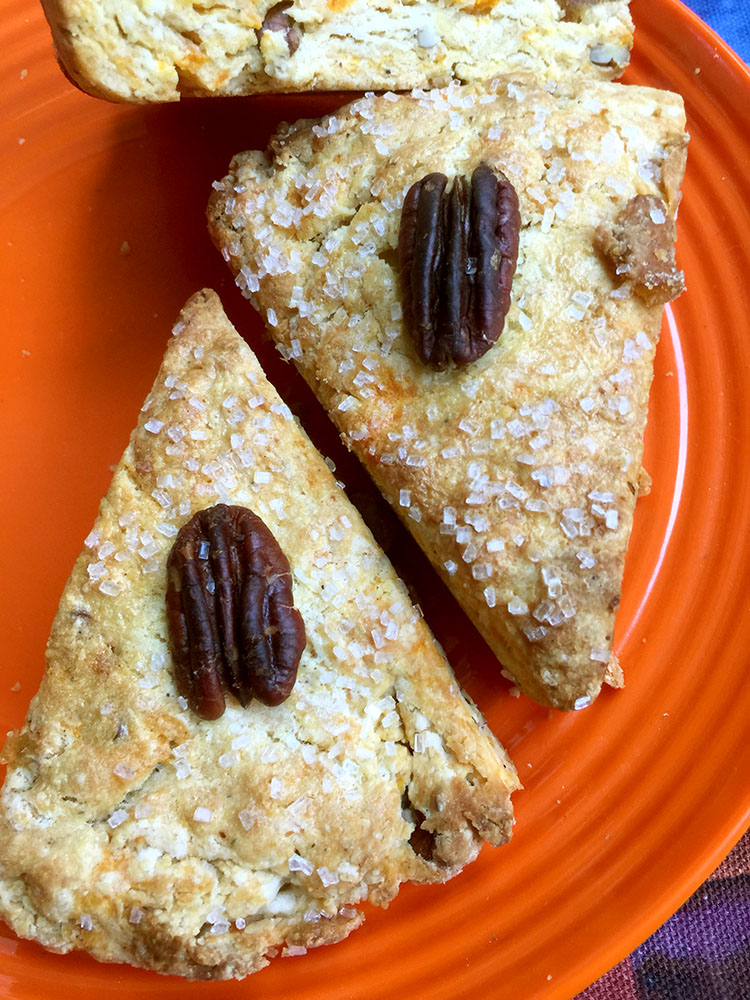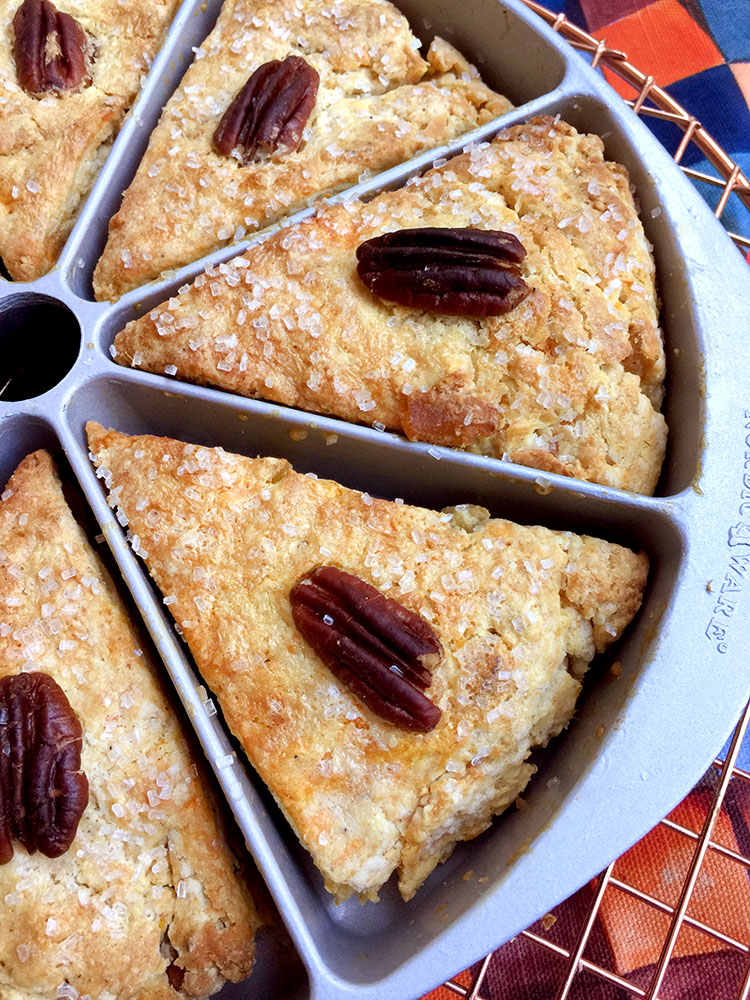
Sometimes I am a rebel. When the rally cry is pumpkin spice, I start to think about sweet potatoes.
Or should I call them garnet yams, which is what the red-skinned, orange-fleshed creatures most of us call sweet potatoes really are (the jewel sweet potato is another version of the orange-interiored…for a great guide on yams and sweet potatoes check this out: https://www.saveur.com/gallery/16-Shades-of-Sweet/). No matter their true name or identity, the over-present pumpkin spice in everything from pies and tarts to lattes and cakes makes me just want to make a good old-fashioned sweet potato pie. Or a scone.
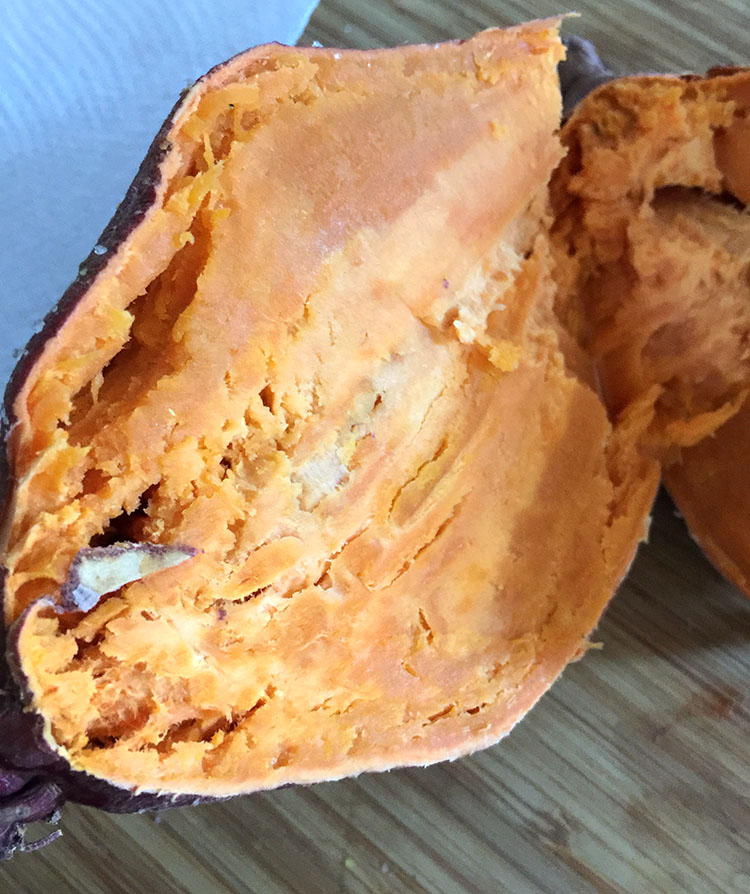
[T]here were other factors in play in my push to use the sweet potato for a scone. I truly considered making a pumpkin scone, but in recent weeks, there seemed to be no canned pumpkin in sight! The Internet was a-buzz with this phenomenon, but we were reassured: there was no pumpkin shortage…it was a late growing season, and canned pumpkin — despite the early pumpkin spice craze beginning in September — would be on the shelves, but just a little late.
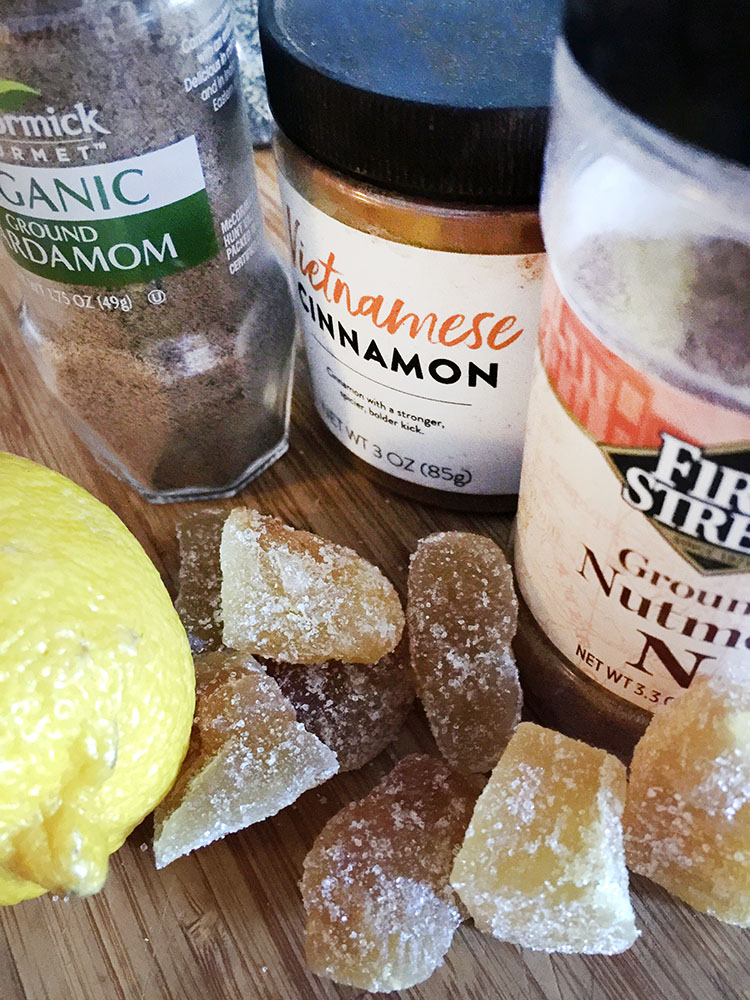
[T]hat was fine by me. I could make scones with sweet potatoes just as sure as there had been sweet potato biscuits (which there had; I’d even made some). I found a fine recipe for Sweet Potato-Ginger Scones from Southern Living magazine that featured sweet potato and spices, as well as a little lemon zest and some chopped crystallized ginger. I decided that some pecans would also match up nicely in this scone.
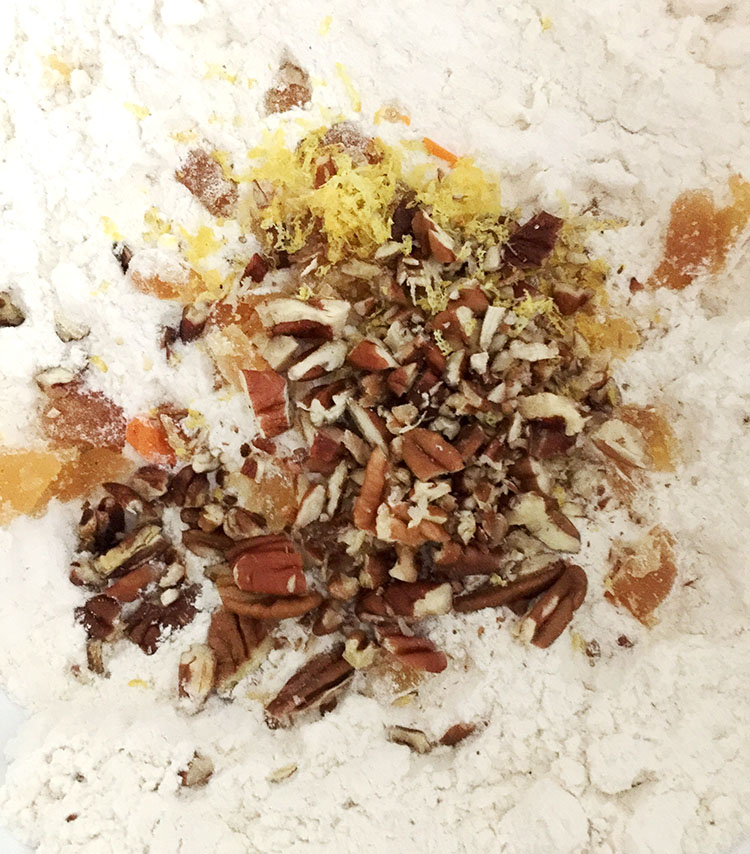
[O]ne caveat about this recipe — it makes 16 scones. So, while I do love scones, I don’t really love them enough to make that many. I cut the recipe in half. The recipe does note you can freeze the unbaked scones, so that is an option if you want to make the full recipe. For the dry ingredients (which initially called for 5-1/2 cups of flour), I blended flour, sugar, baking powder, salt, cardamom, cinnamon, and ginger, then blended in cold butter. To this, the crystallized ginger, lemon zest and pecans were tossed in.
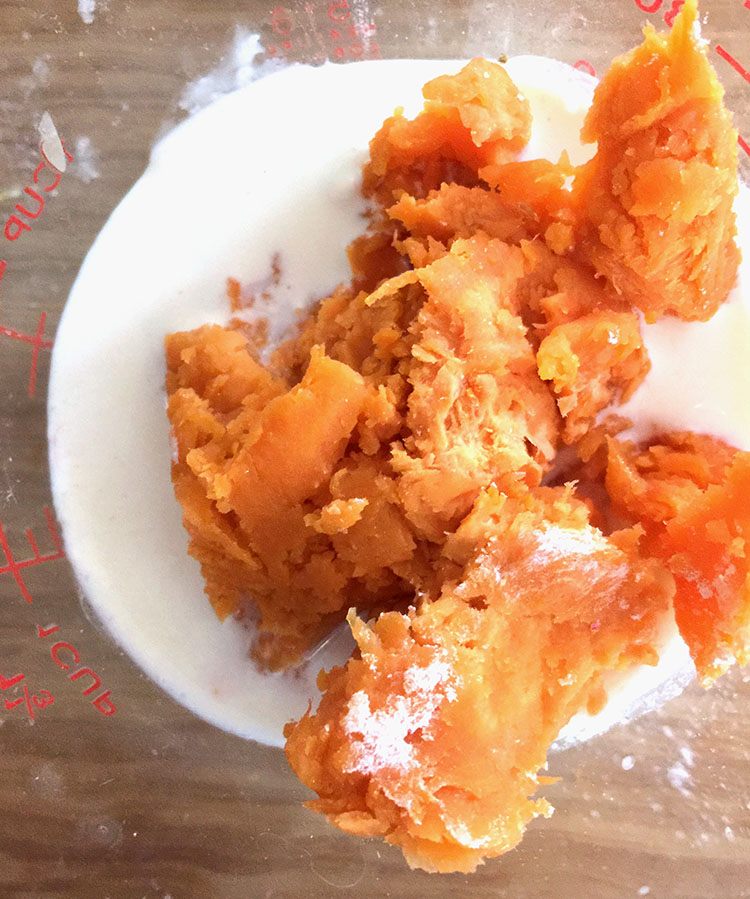
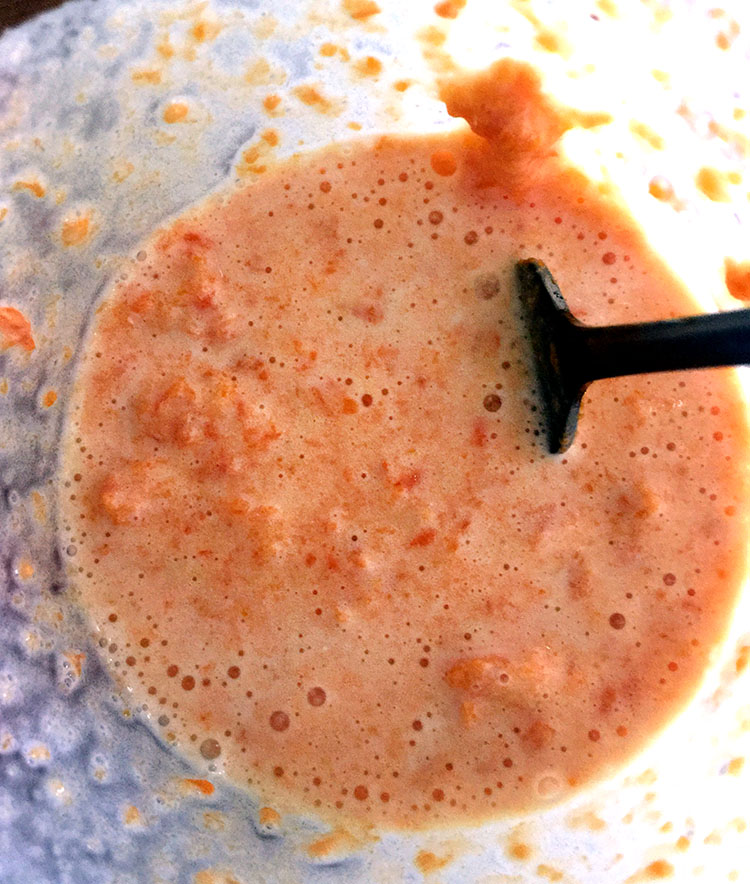
[T]he recipe uses the well method of mixing, making a deep indentation in the dry ingredients, which are spread evenly surrounding it. The wet ingredients (a blend of buttermilk, cream and the mashed sweet potato) are poured into the well in the dry ingredients.
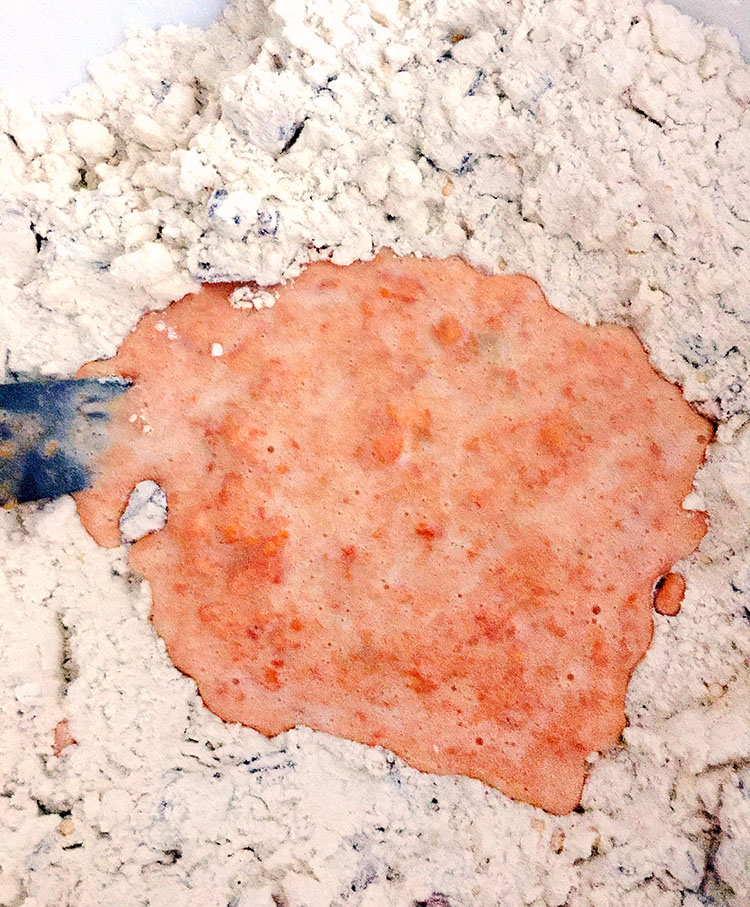
[T]he dough is brought together lightly with a fork to a shaggy consistency. If it seems crumbly, it’s OK.
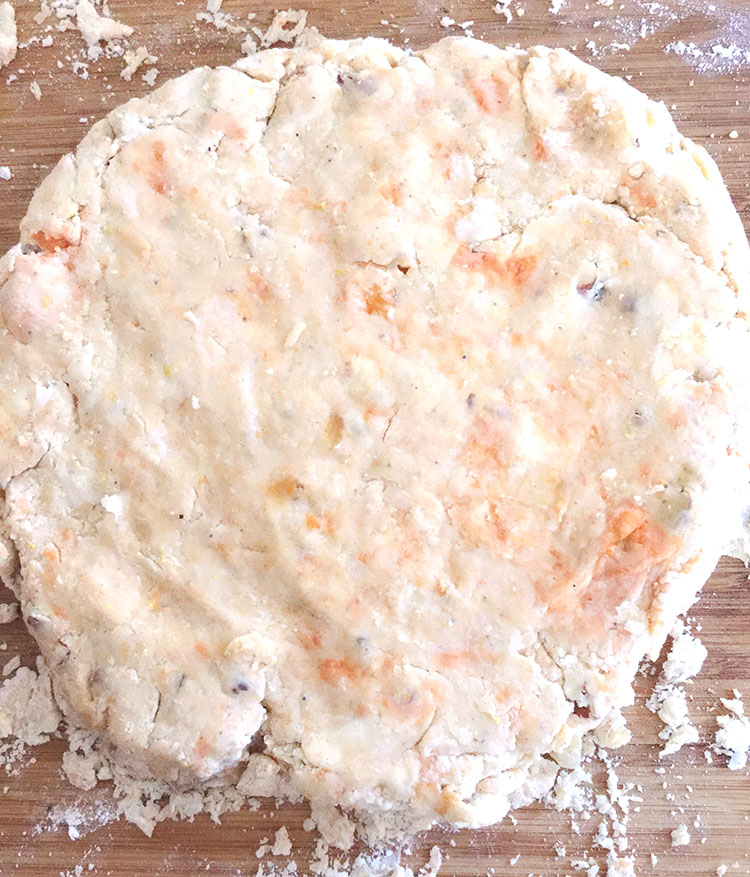
[A] little kneading on a floured board brings the dough together, where it is flattened or rolled out to about one-inch thickness.
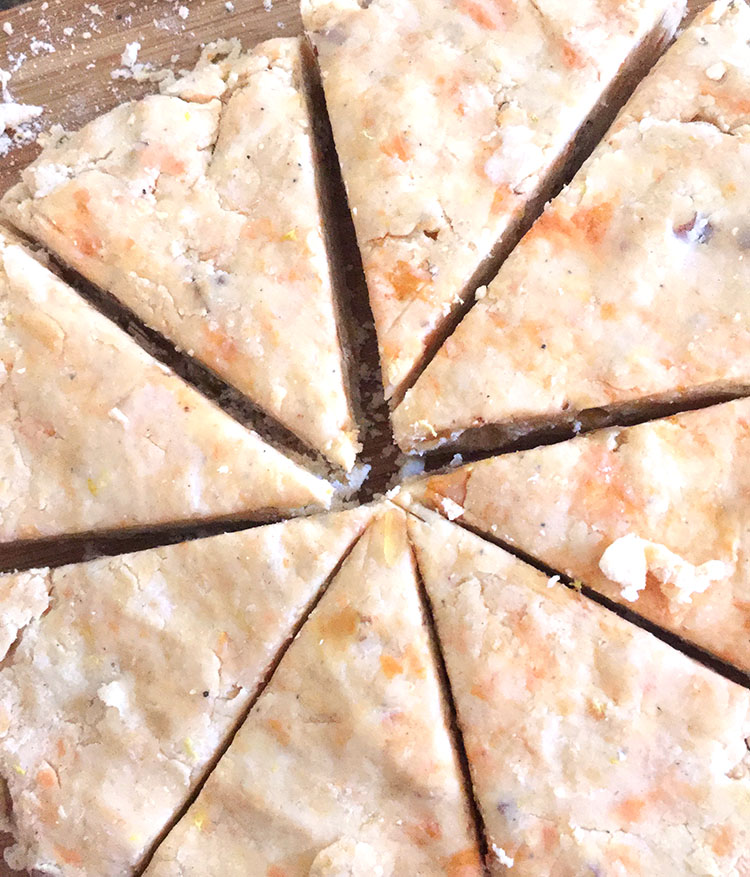
[U]sing a sharp knife, I cut the dough into eight wedges.
As happenstance would have it, I recently purchased a scone/shortbread/cornbread pan, which is divided in eight triangular cavities. I decided to give these scones a try in the pan.
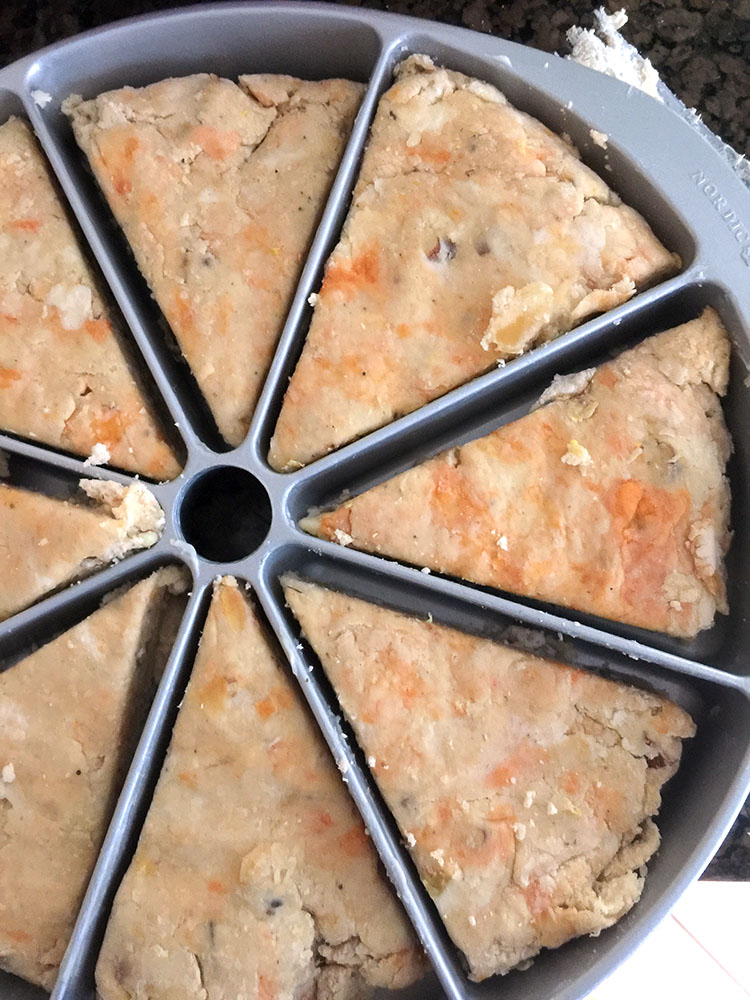
[E]ach scone is brushed with heavy cream and sprinkled with coarse sugar. I also added a pecan half to top each scone.
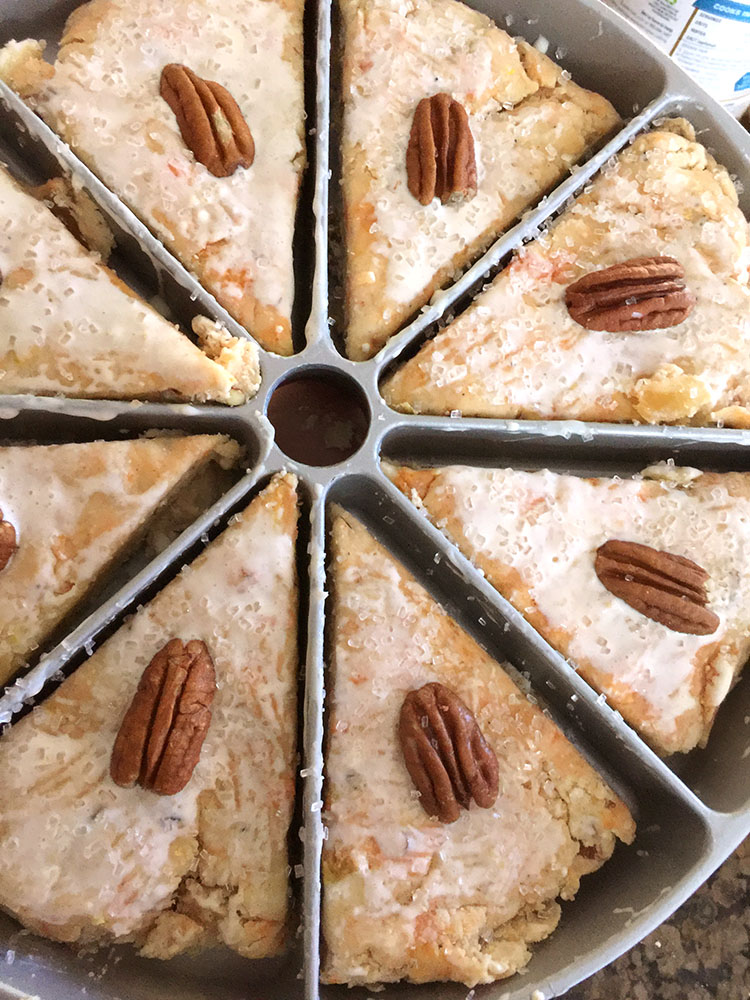
[T]he scones baked to a beautiful golden-orange, their sides straight and sturdy from their time in the pan.
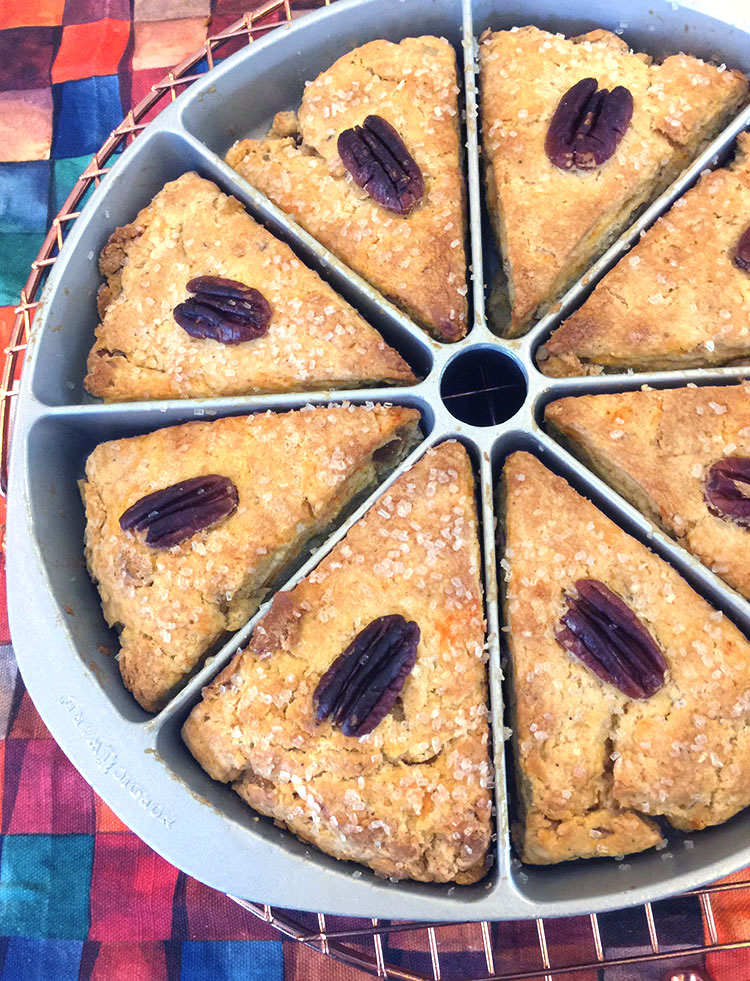
[T]hese scones are lightly sweet, tenderly moist from the sweet potatoes and given a fall mood through the spices and the crystallized ginger, along with a buttery crunch from my addition of the pecans. A perfect scone for this time of year.
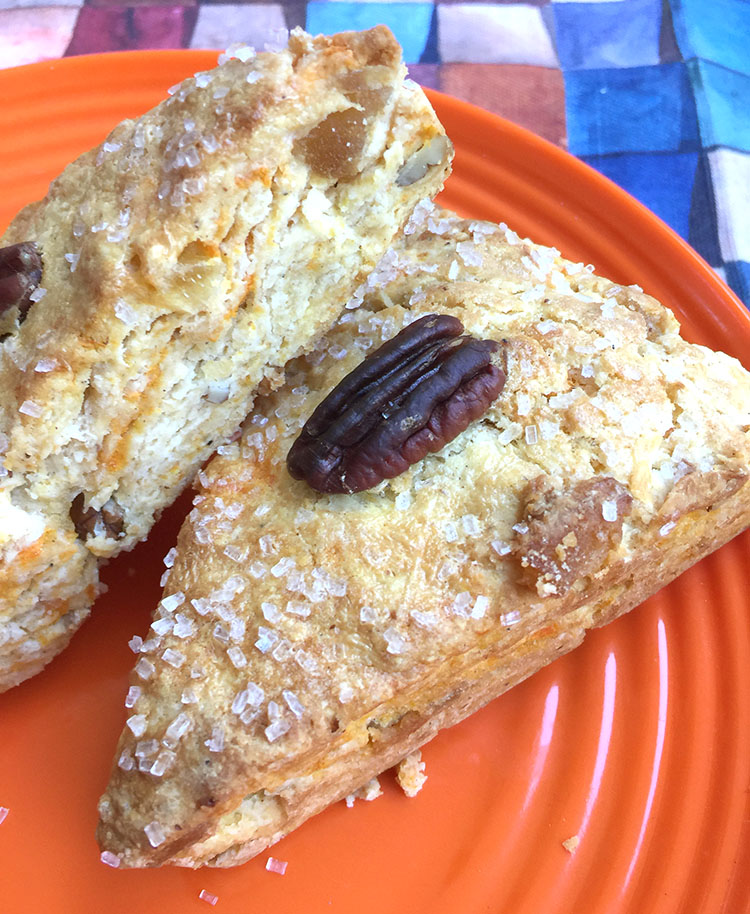
For the recipe, visit Southern Living’s website at https://www.southernliving.com/recipes/sweet-potato-ginger-scones
Blogger’s Note: You can cut the recipe in half or make the full recipe and freeze half the shaped, unbaked scones (just add a little more time when you bake them). For this recipe (which I cut in half), I added a couple of pinches of cinnamon, as well as about 1/2 cup coarsely chopped pecans.
